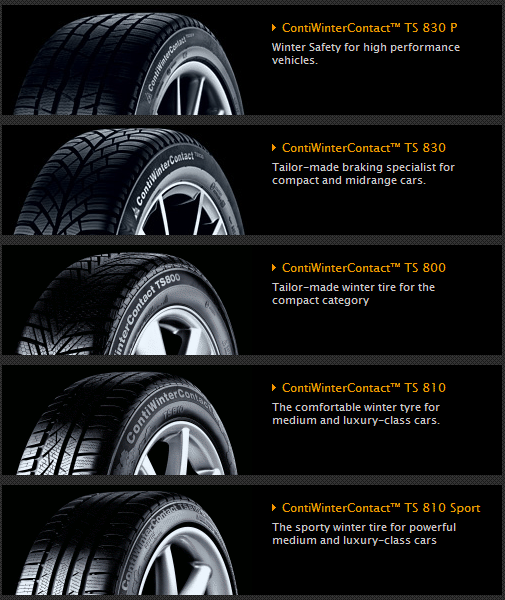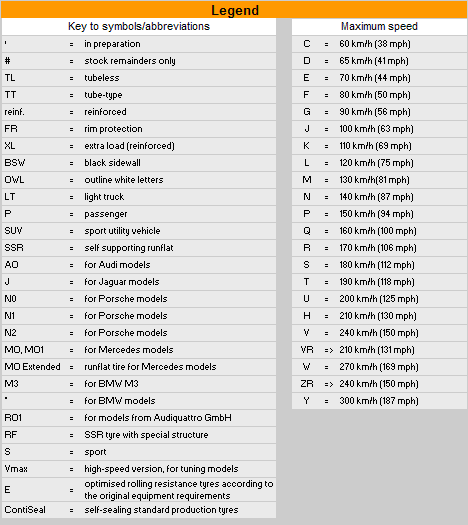
Continental Winter Tyres
Continental Winter Tyres
Continetal top 10 winter tyre tips.
Frosty temperatures, snow-covered roads, sudden fogbanks – winter really puts drivers to the test. With ContiSoccerWorld’s ten tips for the choice of the right tire, the appropriate equipment on board and how to respond in the face of adverse road conditions, everyone stands an excellent chance of getting through winter in one piece.
1. Winter tires: The rule of thumb is: Winter tires from E to E, that is, from the End of summer time to Easter. In this period temperatures often drop below seven degrees and summer tires forfeit their good roadability. “Only winter tires have a suitable rubber compound in the tread and the abundant siping and high-grip edges needed to ensure the widest possible margin of safety on wintry roads,†says tire expert Björn Bolze from central customer service at tiremaker Continental, which markets one of the current ADAC winter tire test winners – the ContiWinterContact TS 830. “The rubber compound used for summer tires hardens already at temperatures well above the freezing point. Winter tires, on the other hand, remain soft and pliant and can thus be counted on to retain their road contact,” notes Bolze. He recommends that winter tires always have a minimum tread depth of four millimeters. Only then can the winter tire’s more than 2,000 sipes spread out sufficiently under load to unfold their full potential. Winter tires should not, moreover, “be driven longer than five to six winters,†says Bolze. With time, and because of the alternation of use in winter and storage in summer, the tread compound can start to harden. In some cases the law requires the use of winter tires, at least in certain types of weather. Many European countries require that motorists adapt the equipment of their cars to seasonal weather conditions.
2. Storing tires: Summer tires must be properly stored to make sure they get through the winter unharmed. The easiest is to leave them at the tire dealer’s or in the repair shop for the winter. Those who prefer to take storage into their own hands should heed the following: Before removing the tires from the car, mark them with chalk to indicate where they were mounted on the vehicle (RL = rear left, FR = front right etc.). Clean the tread and the rim. Hang complete wheels (i.e. tire on rim) on hooks or store them on a wheel rack. Do not stack tires that have been removed from their rims. Stand them up instead (at best, on racks). It’s important that these tires be rotated every four weeks so that they are not resting on the same spot of rubber the whole time. In general, rubber must not come in contact with oil, grease or lacquer. The room in which the tires are stored should be cool and dark.
3. Inspection: Hardly anything is worse than becoming stranded in your car in winter. To avoid this happening, all of your vehicle’s vital functions should be checked through in autumn. Many repair shops or garages offer this kind of winter check for the battery, lights, windshield wipers and brakes.
4. All-around check: In addition to having the vehicle inspected, drivers can themselves do their cars a favor: Antifreeze in the windshield washer system effective at temperatures as low as minus 25 degrees is recommended (repair shops often overlook this). After adding the antifreeze, run the windshield wipers a few times to make sure the antifreeze gets into all the lines. Clean windows and a clear view can be crucial on gloomy winter days. It’s also a good idea to touch up any damage to the vehicle’s paint job so that wet, salty conditions do not lead to rust. Talcum powder can be rubbed into the rubber sealing strips on doors and the boot or trunk to prevent them from freezing shut.
5. On-board equipment: You should keep a functioning ice scraper, a battery jump cable, a flashlight, a blanket and gloves in your car. Having a door-lock deicer anywhere in the car is of no help, of course, in opening the door from the outside. It’s best to have the deicer in easy reach in the entryway of your home.
6. Driving behavior In winter, motorists are put to any number of tests – unanticipated fluctuations in weather, drifting snow, sudden ice, fog, poor vision and aqua- or hydroplaning. “Critical driving situations often pop up very unexpectedly in winter. People often forget this,” says Conti expert Björn Bolze. “Quality winter tires are a high-tech product and offer an additional safety buffer in tight situations. But they are no guarantee for absolute safety when reckless drivers get behind the wheel. Motorists are thus always well advised to drive carefully in winter and not to provoke critical situations by excessive speed or by closely tailing other vehicles. Needless to say, the laws of physics remain in effect in winter.
7. Fog safety: Fog can occur without notice, above all in the cold months of the year, when air and ground temperatures often differ greatly and humidity plays a role. Fogbanks can pop up suddenly, even on very sunny days. When encountering such, drivers are well advised to let up on the gas pedal and remain just within view of the taillights of the vehicle up ahead. This does not mean, of course, that one should let oneself be seduced to carelessness if the vehicle up ahead is moving along at a good clip. A fog-driving study has shown that so-called “unstable line behavior†often leads to accidents because drivers play a game of “follow the leader†with the rear lights of the vehicle up ahead and thus end up braking too late. The rule of thumb in fog is thus: Reduce driving speed considerably and maintain a safe distance to the vehicle ahead of you. Make sure you are able to stop within the distance you can see clearly.
8. Watch out for aquaplaning: Heavy rainfall and melting snow make for wet roads in winter and spring. In such conditions, there is always a lurking danger of aquaplaning. That happens when so much water collects in front of and underneath the tires that the tread’s sipes are no longer capable of dissipating it, causing the tires to skate on a film of water. When the driver gets the feeling that the vehicle is losing ground contact, it is time to let up on the gas pedal, engage the clutch and wait until the tire has reestablished contact with the road. However, good winter tires like the Continental ContiWinterContact TS 800 (the winner of the current test conducted by the consumer evaluation organization in Germany, Stiftung Warentest) offer the best possible grip in such dangerous situations as well.
9. Icy Bridges: Bridges can pose a risk, especially in autumn. A bridge can be unexpectedly slippery even when roads are dry and free of ice. Unlike the ground under firm roads, the asphalt does not store any heat here, allowing air humidity or fine rain to freeze much more easily. So motorists should exercise extra caution on bridges.
10. Snow chains: Winter tires are no substitute for snow chains when underway in the mountains. In many cases, snow chains are the only way to navigate steep, snow-covered passages. On many routes cars are required to have chains along. Blue traffic signs with white chain tires alert motorists to this. What is important is that the snow chains be of the right size (the exact dimensions to follow here are indicated on the side of the tire). The chains should be mounted on the drive tires. (It is, of course, advisable to practice doing this prior to the trip. And when the going gets tough on the road, do not wait until the last minute on an incline to attach them.) Chains should always be used only on snow (does not apply to occasional patches free of snow).
To Purchase the ContiWinterContact Range Click Here
Here’s a little help understanding the Symbols/Abbreviations and Speed Ratings

